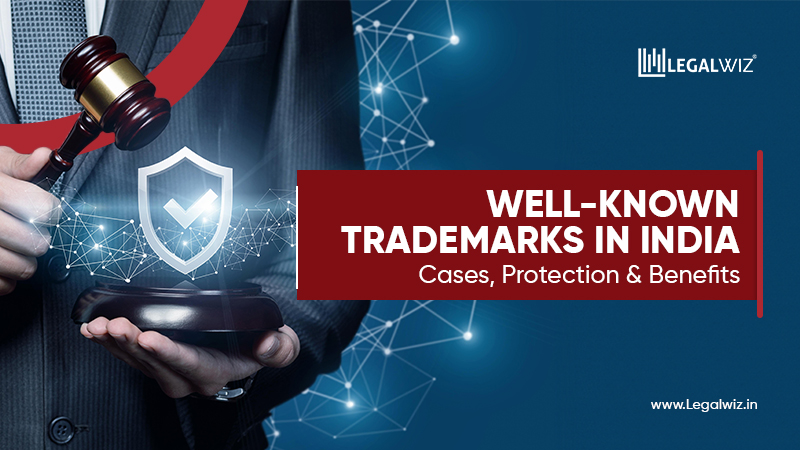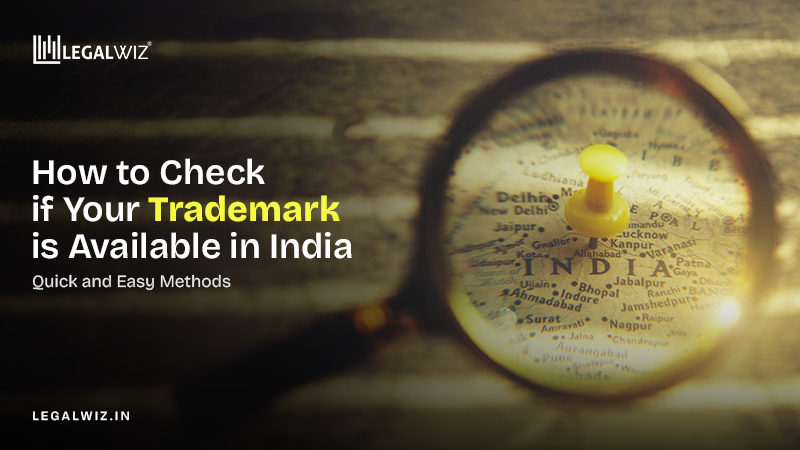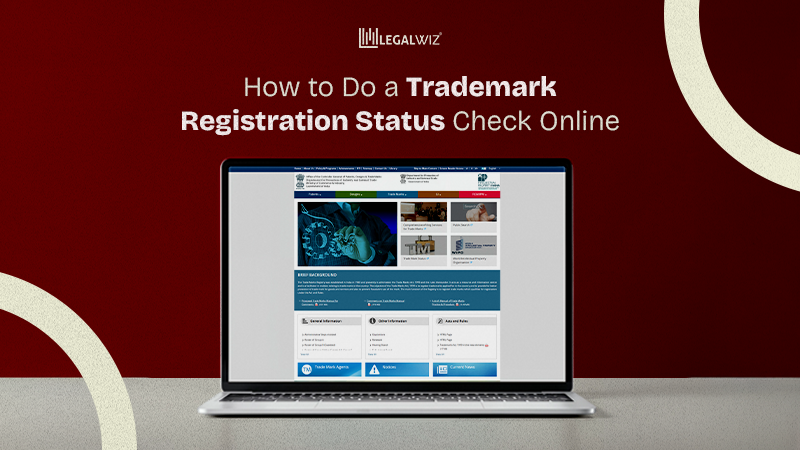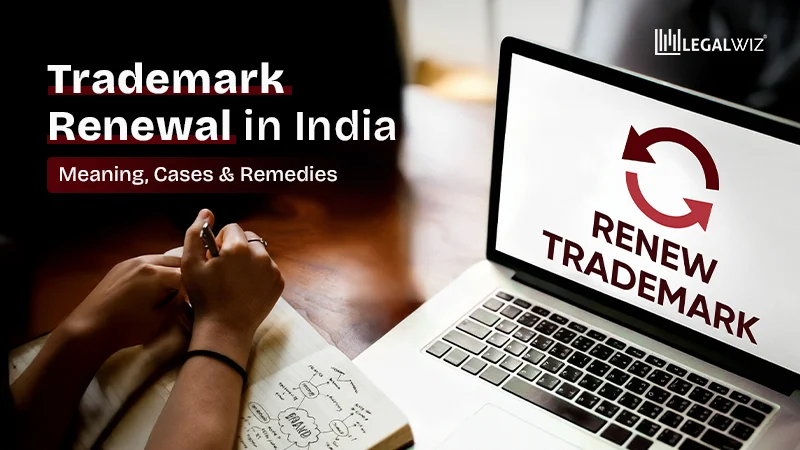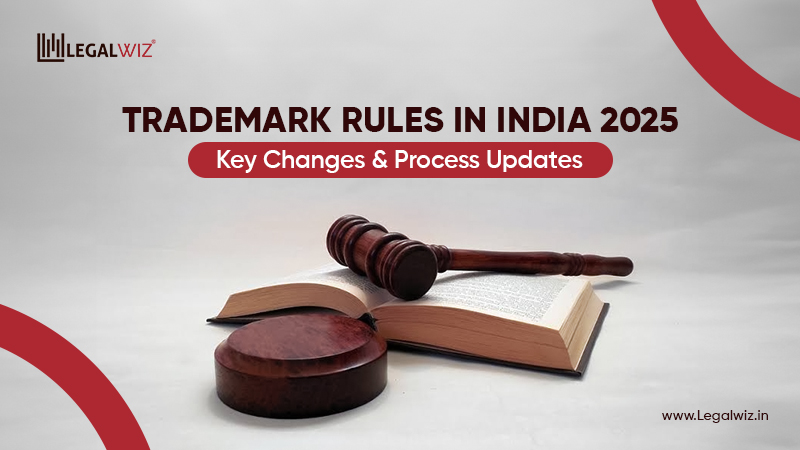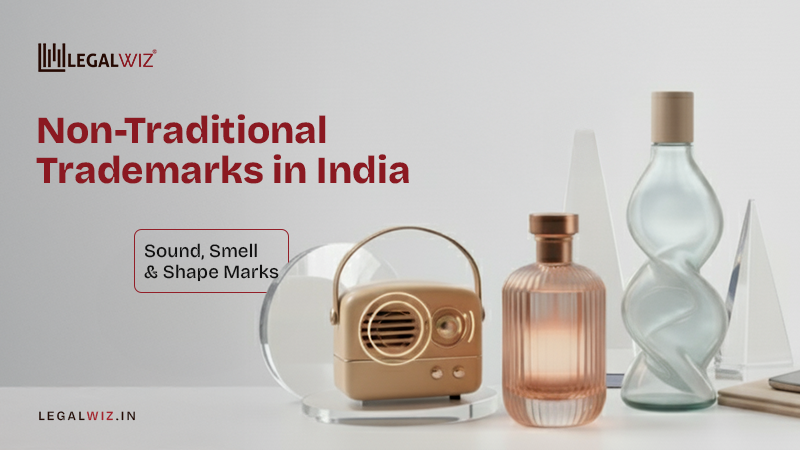Well-Known Trademarks in India: Cases, Protection & Benefits
Do you ever wonder why some brands are famous, while others barely get a second glance?
Whether you’re picking up groceries, walking your dog, or heading out on a family vacation, some brands just seem to follow you everywhere. You spot them in small shops, big cities, remote towns, and even abroad. And when you come across a fake version, you can tell right away that something feels off.
Think Coca-Cola, Amul, Titan, Parle-G, Colgate, or Nike. These aren’t just products; they’re part of everyday life. You don’t just drink Thums Up; you connect with its personality. A Titan watch isn’t simply about telling time; it carries trust and quality.
And here’s the secret: it all ties back to trademark registration. These brands have gone the extra mile to legally protect what makes them unique.
Also read: Trademark Registration Fees and costs
So why does India give extra legal protection to such well-known brands? Because their value goes far beyond sales figures. It’s about the reputation they’ve built and the recognition they’ve earned over the years.
In this blog, we’ll explore real cases where courts decided which brands deserve that special status, the protections that come with it, and what it truly means to be a “famous” brand in the eyes of the law.
1. Trademark 101 – From “Meh” to “Mega”
Think of a trademark as your brand’s ID card; it’s what tells the world, “Hey, this is me, not them.” Every business wants one because it stops copycats from swooping in and pretending to be you.
Now, not all trademarks are created equal. A regular trademark protects your brand in the markets you operate in. But a well-known trademark? That’s the celebrity version. It’s protected even in places you haven’t set foot in yet. Your brand is so recognizable, it’s like a celebrity cameo that everyone notices, even in the dusty corners of India where no one expected it to appear.
Take Coca-Cola or Nike, for instance. Even if someone tried selling a knockoff cola or sneakers in a tiny town, the law can step in because these brands aren’t just “known”—they’re well-known. Fame comes with perks, and in the trademark world, those perks are legal armor.
2. What Makes a Trademark “Well-Known” in India?
Not every brand gets the VIP treatment. To be considered well-known under Indian law, a trademark has to meet certain legal benchmarks, such as Section 2(1)(zg) and other rules under the Trademarks Act, 1999.
Authorities weigh several factors before rolling out the red carpet:
- Reputation & recognition across India – Are people nationwide humming your brand’s tune?
- Duration & extent of use – Have you been around long enough to leave a mark?
- Advertising and promotion – Billboards, jingles, viral campaigns… have you stamped your presence everywhere?
- Distinctiveness – Can consumers spot your brand from a mile away without squinting?
In short: if your brand had a fan club before TikTok even existed, congratulations, you’re basically a market celebrity. The law recognizes that fame isn’t just hype; it’s earned, and it deserves protection.
3. Famous Indian Cases of Trademark – Lessons from the Courtroom
India’s courts have had some intriguing battles over trademarks. It’s not only attorneys in suits who are involved in these disputes; companies are also protecting their popularity, reputation, and identity. Before diving into these cases, you may want to take a look at the trademark hearing process, as it will give you a better understanding of them.
Each one teaches companies something, including how far they can push their brand, what it means to emulate someone else, and why being famous is more than just bragging rights. Let’s take a look at some of the most famous courtroom disputes.
Cadbury v. Neeraj Food Products – Chocolate or Chocolatey Wannabe?
Cadbury isn’t just chocolate; it’s the purple wrapper that instantly whispers “treat yourself,” the nostalgia of childhood, and that little hit of luxury in every bite. Now, imagine someone popping up with a “Cadbury-style” chocolate. The wrapper looks nearly identical, but the taste? Let’s just say it doesn’t quite melt your heart the same way. That was Neeraj Food Products.
Why it mattered:
- The public naturally associates Cadbury’s iconic purple with quality and trust.
- Even if the chocolate inside wasn’t identical, the packaging alone could trick consumers.
- In short, your eyes can be fooled even when your taste buds aren’t.
Court’s take:
- Packaging, colors, and the overall “feel” (what lawyers call trade dress) are protected if they’re distinctive.
- Mimicking the look and aura of a famous product, even without copying the recipe, is infringement.
Lesson for brand owners:
- Design, packaging, and color aren’t just marketing fluff; they’re legal shields.
- Consumers trust what they recognize; brand visuals carry real weight.
It’s like crashing a fancy costume party dressed exactly like the host. You might think you’re blending in, but everyone notices… and nobody’s impressed.
Fame isn’t just about recognition; it’s protection in a purple wrapper. Copy the style, and you risk more than a chocolatey fail; you risk the law.
Tata Sons v. Manoj Kumar Sharma – Big Tata, Big Protection
Tata isn’t just a company; it’s a name that pops up in living rooms, boardrooms, and schoolbooks. When someone tried to use “Tata” in their business, it wasn’t just letters on a sign; it was an attempt to borrow decades of trust, reputation, and goodwill.
Why it mattered:
- Even partial use of a well-known brand can mislead consumers into thinking there’s a connection.
- Reputation alone can justify legal protection beyond the original industry.
- In essence, the courts recognized that Tata’s name carries weight everywhere it’s known.
Court’s take:
- Tata’s brand equity was central to the decision.
- Protecting a well-known mark isn’t just about stopping imitation; it’s about safeguarding consumer trust.
Lesson for brand owners:
- Fame creates a legal shield that stretches far beyond your immediate products or services.
- Misleading use of a famous name can lead to serious legal trouble.
It’s like someone using your nickname at work to take credit for your ideas, you’d step in immediately. Big brands do the same legally.
Tata’s fame isn’t just a badge of honor; it’s a legal moat. Try to ride it, and the courts will remind you who built it.
Also read: Trademark- Starbucks vs. Sardarbuksh
Amul v. Other Dairy Brands – The Power of the Little Amul Girl
Amul’s mascot, the cheerful little Amul girl, has been charming Indians for decades. She’s not just a cartoon; she’s nostalgia, wit, and a brand personality rolled into one. Naturally, other dairy brands saw her popularity and tried to imitate her playful style to sell their products.
Why it mattered:
- Consumers instantly connect the mascot with Amul’s quality, messaging, and humor.
- Copying the style could mislead buyers into thinking the imitation was actually Amul.
- The mascot isn’t a decoration; it’s a visual signature recognized nationwide.
Court’s take:
- Mascots, jingles, slogans, and distinctive marketing styles are all legally protected.
- Any imitation that confuses or misleads consumers is considered infringement.
Lesson for brand owners:
- Your creative identity, logos, mascots, and slogans are legally valuable, not just cute marketing.
- Even “fun” elements can be enforced in court; originality pays off.
It’s like someone copying your Instagram aesthetic down to your filter and style, and gaining followers pretending it’s theirs. Amul’s mascot proves why brands fiercely guard their visual identity.
The little Amul girl isn’t just adorable, she’s a legal weapon. Copy her charm, and the courts will step in faster than you can say “butterly good!”
Know more about the dairy product trademark:Trademark Class 29: Poultry, Meat, Dairy & Oils Guide
Asian Paints v. Ajay Enterprises – Colorful Conflicts
Asian Paints isn’t just about paint; it’s about trust, quality, and a distinct brand personality that runs through everything from its name to its signature color palettes. When Ajay Enterprises launched products with similar colors and packaging, it wasn’t just marketing; it was an attempt to ride on Asian Paints’ hard-earned recognition.
Know more about trademarking paint and other products: Trademark Class 2 for Paints & Varnishes in India
Why it mattered:
- Visual similarity can easily confuse customers, making them think they’re buying the established brand.
- Distinctive colors, packaging, and overall presentation are integral parts of a brand’s identity.
- The “vibe” of a brand is as important as its logo or name in shaping consumer perception.
Court’s take:
- Protection extends beyond logos to include colors, packaging, and trade dress.
- Courts recognized that copying the overall presentation can mislead customers.
Lesson for brand owners:
- Design elements, color schemes, and brand personality are legally enforceable.
- Attention to detail in branding isn’t just aesthetic; it’s protection against copycats.
It’s like someone painting their café walls in your signature color scheme, customers walk in expecting your menu and experience. Surprise, it’s not the same! Brand identity isn’t just a logo; it’s a whole palette of trust. Copy the colors, and you risk more than just customer confusion; you risk the law.
Bajaj Auto v. TVS Motors – When Speed Meets Law
In India’s fast-moving two-wheeler market, Bajaj and TVS collided, not on the road, but in the courtroom, over names, design similarities, and brand identity. Both rely heavily on reputation, performance, and style to win customers, making even small overlaps a serious concern.
Want to protect your automobile brand from copycats? Learn all about it here: Trademark Class 12 for Protecting Automobiles, Car Accessories & Transport Equipment Brands
Why it mattered:
- Minor similarities in names or designs can mislead consumers, especially in highly competitive markets.
- Brand identity encompasses not just the logo, but reputation, performance, and unique design elements.
- Confusion in perception, even subtle, can have real business consequences.
Court’s take:
- Well-known brands receive extended protection, even in crowded and competitive industries.
- Courts emphasized that preventing consumer confusion is central to trademark law.
Lesson for brand owners:
- Distinctiveness is your legal armor.
- In saturated markets, even tiny overlaps can spark disputes and legal battles.
It’s like racing a friend on nearly identical bikes; one small mix-up, and everyone assumes it’s their winning streak. In fast lanes or boardrooms, brand distinctiveness isn’t optional; it’s protection. Blur the lines, and the law will hit the brakes for you.
Being well-known in India isn’t just a marketing achievement; it’s a legal superpower. Your name, logo, mascot, colors, and design all form your brand’s identity. That also includes the brand’s slogan; thus, learn all about trademarking your slogan in India. Protect them, defend them, and remember: fame comes with perks, and the courts have your back if you play it right.
4. How Well-Known Trademarks Are Protected in India
Some brands are just too famous to ignore, and India’s trademark laws make sure they stay untouchable. Well-known trademarks don’t just rely on recognition; they get extra legal muscle that stops copycats in their tracks, even beyond the brand’s immediate industry.
| Protection Type | What It Means | Why It Matters |
| Automatic protection vs. registration | Famous brands often enjoy recognition even without formal registration in every category. | Registering your trademark adds legal muscle, proof that the brand officially belongs to you. |
| Prevention against imitation or dilution | Copycats trying to ride your fame or weaken your brand’s reputation can be blocked. | The law stops others from using confusingly similar marks that could mislead consumers. |
| Cross-class protection | Your well-known mark is protected even in unrelated industries. | Fame stretches across classes, preventing others from unfairly benefiting from your reputation. |
Imagine your brand as a celebrity at an exclusive club. The bouncer knows who’s legit, who’s a fan, and who’s trying to sneak in disguised as you. That’s exactly how the law protects well-known trademarks in India. To learn more about how these trademarks are safeguarded, check out our blog on 5 famous trademark cases businesses can learn from.
5. Benefits of Having a Well-Known Trademark
Having a well-known trademark isn’t just about bragging rights; it’s like giving your brand a superpower in the marketplace. Here’s why it matters:
- Enhanced legal protection across India: Your brand enjoys protection nationwide, even in industries you haven’t formally registered in. Fame spreads far and wide.
- Easier to challenge copycats: Imitators have nowhere to hide. Courts recognize your reputation and help you defend it.
- Boosts brand credibility & customer trust: Consumers instantly associate your brand with quality and reliability. Recognition becomes a seal of trust.
- Marketing brownie points: There’s a subtle brag factor: “Yes, we are THAT brand.” Being well-known itself becomes a marketing asset.
Conclusion – Why Being Well-Known is More Than Just Ego
A well-known trademark is more than simply a name or a logo. Your brand’s reputation, trust, and narrative have grown over time. It’s what makes people want to buy from you right away, keeps copycats away, and provides you with legal power when you need it.
But being famous isn’t enough. To truly protect your brand, you need to keep a close watch on every logo, phrase, and design—and respond quickly if someone tries to imitate or misuse it.
That’s where our team comes in. Our experts can guide you through trademark registration in India, monitor potential violations, and assist you in taking legal action if required. With LegalWiz, your brand doesn’t just get recognition—it gets protection, a clear plan, and the freedom to grow without worry.
Want people to remember your brand and not replicate it? Let LegalWiz help you every step of the way as you start constructing and safeguarding.
Frequently Asked Questions
Can a startup ever be considered well-known?
Not right away. Startups normally need to utilize their products consistently, build a strong brand, and get people to recognize them over time. Fame increases with exposure, repute, and commercial influence.
Does being well-known in India help you do business in other countries?
Yes, but only up to a point. Brand visibility and local registrations are what make a brand known throughout the world. If you are well-known in India, it may be easier to get protection in another country, but local rules are what really matter.
How long does it take for a brand to become known?
There is no set time frame. It relies on how well the product is marketed, how good it is, how much people are interested in it, and how many people it can reach. Some companies take a long time to become famous, while others do it quickly with the appropriate plan.
Does a well-known brand need to be registered?
Yes. Fame may get you immediate recognition, but registering your business makes it simpler to enforce the law and enhances your legal standing.
Can well-known names stop people from making copies in different fields?
Yes. Cross-class protection lets well-known brands keep people from abusing their reputation even outside of their main area of business.

Sapna Mane
Sapna Mane is a skilled content writer at LegalWiz.in with years of cross-industry experience and a flair for turning legal, tax, and compliance chaos into clear, scroll-stopping content. She makes sense of India’s ever-changing rules—so you don’t have to Google everything twice.
